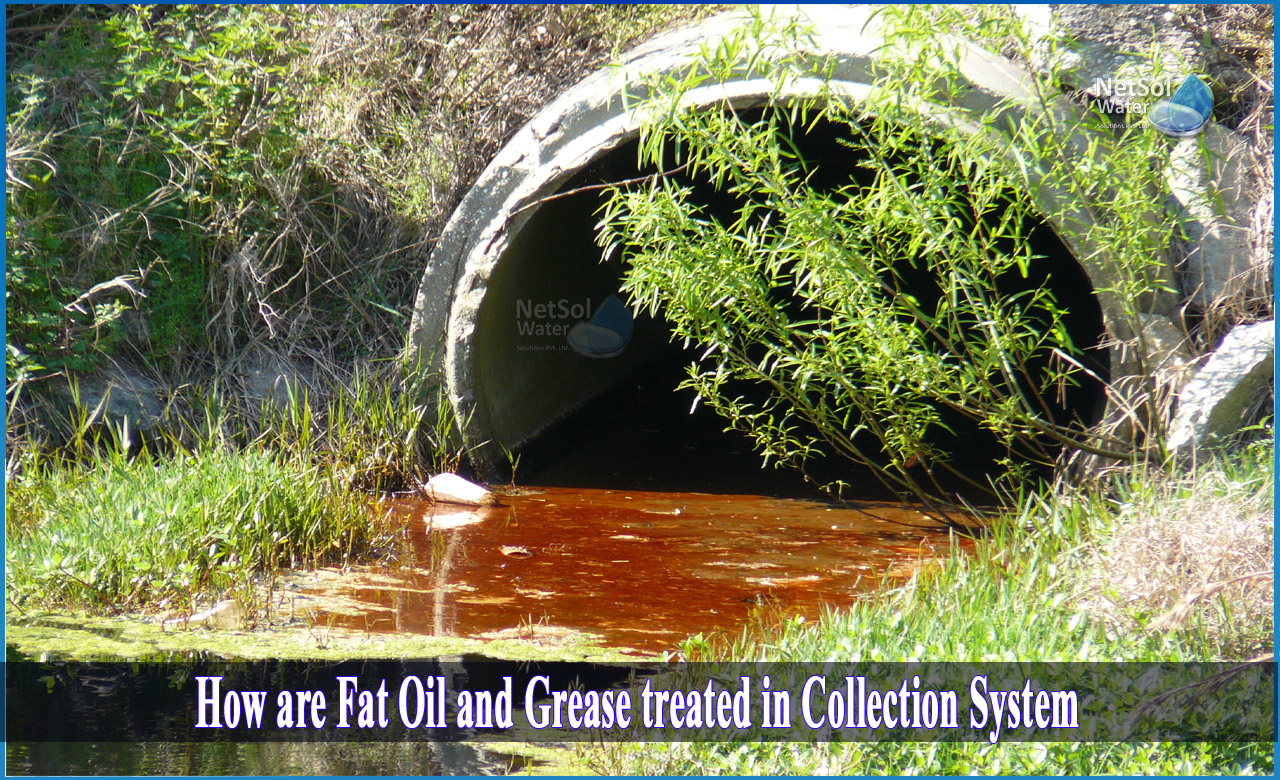How are Fat Oil and Grease treated in collection system?
Fat, oil, and grease (FOG) are by-products of cooking that include vegetable oils, meats, and dairy products. FOG may enter the sewage system during cleaning procedures from Food Service Establishments such as restaurants, takeouts, and bars. When FOG is hot, it may readily enter sinks and drains; however, when FOG cools, it hardens, obstructing and destroying sewage pipes and causing issues throughout the wastewater treatment process.
FOG-related issues in Wastewater
FOG in the wastewater system creates a number of issues, both in the drains and wastewater collecting systems, as well as in the wastewater treatment facilities itself.
FOG in drains and the wastewater treatment systems
When fats, oils, and grease enter the drainage system, they congeal and solidify in the pipe as they mingle with food and other sanitary waste. FOG-related clogs can cause sewage overflows owing to limited capacity or rupture drain and sewer pipes, in addition to unpleasant odours. This can have serious environmental effects, such as land pollution and a threat to public health.
The presence of FOG in the wastewater treatment plants
When FOG enters the wastewater treatment facility, it might cause further problems. Grease degrades more slowly biologically than other frequent components of municipal sewage.
FOG may also congeal and settle on the surfaces of settling tanks, digesters, pipelines, pumps, and sensors. Grease can also partly clog screens and trickle filter systems, clog sludge pumps, and limit the operation of sludge digesting microorganisms in significant quantities.
What are Grease traps?
Grease traps are frequently overlooked. Pumping might be delayed if the trap is not inspected. When utilized in a maintenance program, biological additives can lower the amount of BOD-5 and FOG entering the collection system.
FOG wastewater treatment solutions
FOG is treated in three ways:
1: The most effective strategy is to prevent FOG from entering the wastewater system at the source.
2: It should then be removed from the sewage system before reaching the wastewater treatment facility.
3: Finally, FOG may be dealt within the wastewater treatment facility. Traditional approaches include injecting bacteria or enzymes to combat FOG, whilst newer approaches involve activating existing bacteria, causing FOG to break down.
Source elimination
Controlling FOG at the source is the most effective method. To remove FOG, many establishments use a passive grease interceptor device. Grease interceptors must be emptied and cleaned on a regular basis to be effective.
Drainage removal
Once FOG has accumulated in the sewage system, it may be required to physically remove it, especially at deposition 'hotspots.' Because of their closeness to residential, commercial, or industrial districts; the features of the sewage pipe, such as its diameter or condition; and the characteristics of the sewer network, such as the number of inflows and effluent volume, these places will be more prone to FOG clogs. When pipe repairs or modifications to cleaning and maintenance are ineffectual, the only option may be manual collection, which requires a large number of people and has health and safety issues.
Wastewater Treatment Plant
FOG removal at wastewater treatment plants has involved the use of biological agents to break down and consume grease accumulation. Bioaugmentation is a method that employs bacteria-forming enzymes to disrupt the link between glycerol and fatty acids. These components can subsequently be disposed of by biodegradation, in which bacteria and microorganisms feed on fat, sugar, and starch wastes. Instead of introducing foreign enzymes and bacteria, newer treatment approaches rely on stimulating native bacteria to break down FOG. To promote the indigenous bacteria population and expedite natural biodegradation, this technique uses optimized fermentation-based yeast proteins, micronutrients, and specialized surfactant chemistry dosed at only a few parts per million.
Fat, oil, and grease pose a significant challenge to our wastewater treatment systems. FOG should ideally not enter the network, but if it does, the right solution must be chosen to handle the problem.
Netsol Water offers high-end wastewater treatment systems that include neutralization, filtration, extraction, separation, and recycling of wastewater streams. Our facilities for hazardous and non-hazardous wastewater management deliver environment-friendly wastewater solutions. We also use tried-and-tested processes and innovative systems to generate effluent that meets regulatory compliance.
For further information or product purchase related questions, call on +91 9650608473 or email at enquiry@netsolwater.com.



